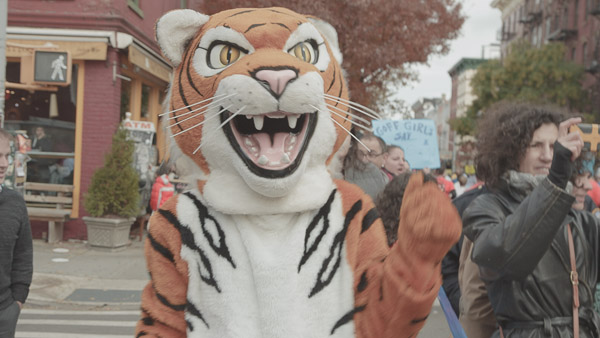 |
| Enjoy this tiger at the 2013 New York Marathon from a video I'm cutting. |
UDATE: Check out
this solution for directly converting MLV to cDNG or DNG.
I've had some difficulty converting files from the latest Magic Lantern raw video format (MLV) into something that I can post-process (like DNG or cDNG files) on my Mac.
After working on it a month or so ago, I gave up and eventually installed windows via VMWare Fusion so that I could get mlv_dump working. I was successful in windows and was able to mass convert a bunch of footage into RAW files which was compatible with my workflow (currently using RAWMagic on OSX, etc.).
Well, somewhere a few weeks ago I deleted my VMWare Fusion partition and lost the notes I had on the windows box detailing how to do the conversion. I didn't want to go through the trouble of installing windows again so I gave another stab at converting MLV files on OSX… and I got it to work!
So I want to share my findings, both for my future self, as well as anyone else out there using the new format with OSX.
First off, download the pre-compiled binary that user
marekk has generously posted on the Magic Lantern forum from his Dropbox:
https://www.dropbox.com/s/497bvdlcsd7p160/mlv_dump.zip
I copied this file into the same directory as my MLV files and unzipped it.
Open a Terminal window and cd into the folder where you have your MLV files (and now mlv_dump).
Drag the (unzipped) mlv_dump file from Finder into the Terminal window and add the following text:
-o outputfilename.RAW -r mlvfilename.MLV
So now you should have something like the following in your Terminal window:
<path for your MLV files>/mlv_dump -o outputfilename.RAW -r mlvfilename.MLV
Of course, replace outputfilename.RAW with whatever name you want to call the RAW file to be generated. And replace mlvfilename.MLV with the name of the MLV file that your camera produced.
Once you hit Enter, it should start processing and you'll get a RAW file. Voila! Continue your workflow from there.
Hope this helps folks to ease the transition to using MLV.
If someone savvier than me with OSX can think of a method to batch process a bunch of MLV files into RAW, please let me know! Leave a comment below, thanks!








